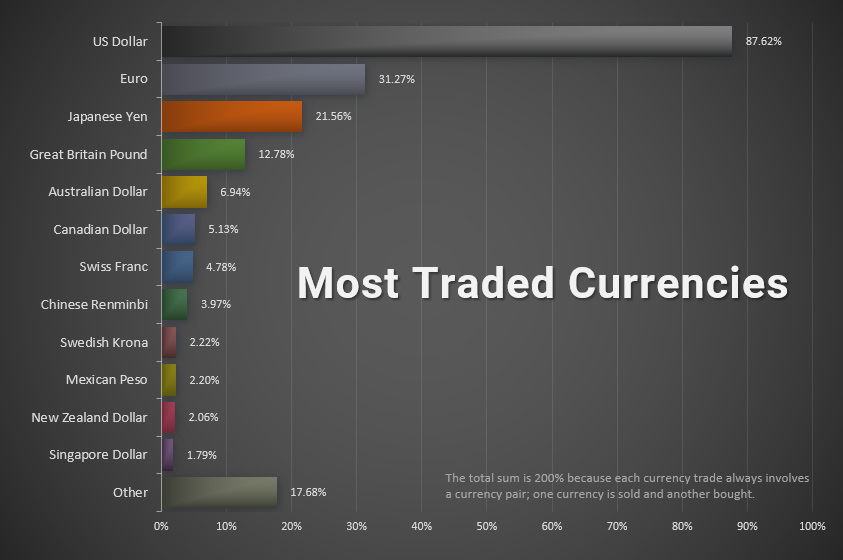
The stock exchange is an enormous marketplace for trading and investing. It's like a mall, an auction house or swap meet with many vendors, institutional investors and public companies that are listed on stock exchanges. You should know the differences between these markets before you dive in. This article will cover some of the differences between these types of securities. Understanding these differences is essential to succeed in the stock markets.
Common stocks
Common stocks have many advantages. They offer liquidity and greater returns. Investors feel secure and financially secure when they invest in common stocks. Investors have no legal obligations and aren't concerned about what might happen to their investment. Common stock investments carry the risk of losing more than they invest, but they can also be a good option for investors who want passive income and don't have to assume risky legal obligations. As an added bonus, common stocks allow investors to lock in higher returns, while avoiding legal responsibilities.
Class A stocks
Most people prefer Class A stocks over Class B. This is because Class-A shareholders enjoy more benefits and voting power than their lower class counterparts. These stocks have voting rights and are often protected from bankruptcy. These stocks are popular among conservative investors and retirees because they offer many benefits for little risk. These stocks tend to be less volatile and are therefore unsuitable for everyone.
Stocks of class B
Although Class A shares and Class B shares have similar dividend yields to each other, Class B shares aren't as dividend-focused. Class B shares are usually subject to contingent deferred sale charges (or CDSCs), which decrease over time but typically disappear after six year. Consequently, Class B shares may not be worth more than $100,000. But, investing in Class B shares has many benefits. Active investors can benefit from these differences to choose the best class.

Stocks of the Class C
If you're looking to buy shares, be aware that Class A stocks are less expensive than the other classes. These shares will require you to make higher sales loads every year as well as other expenses. The Class C shares can not be converted to Class A shares. You will need to pay the CDSC during the entire period of your investment. Additionally, Class C shares have higher annual operating costs than their counterparts in class A and B.
Stocks in Class D
There are many classes that may be best for you when it comes to investing in stocks. Class A shares may be best for long-term investors. However, you may want to avoid paying high sales charges, as these can lower your returns. Although Class C shares are less expensive than Class A shares, your annual expenses could be higher than for Class A stocks.
Stocks in Class E
When you buy shares of class B shares, you're not paying a front-end sales charge. The contingent deferred selling charge (CDSC), will apply to the sale of class B shares. This charge, also known as the "back-end load", will gradually decrease in value and eventually disappear entirely. Class C shares will continue being subject to higher operating expenses and 12b-1 charges.
Stocks in Class F
If you are looking for the best deals possible on common stock, then you should consider investing in Class-F stocks. These shares provide a unique set of benefits to startup investors. These shares have unique voting and protective provisions, which allow founders to retain more control over the company. These shares are ideal for serial entrepreneurs and large investors. You can issue ordinary shares of common stock if you need capital fast.
Stocks of the Class J
To designate a stock in the New York Stock Exchange (NYSE), a ticker symbols will have the letter J at its end. This designation is temporary and usually is removed following a shareholder vote. This stock is designated as voting stock because it gives shareholders the right to vote on the board of directors or other corporate transactions. To distinguish it from other issuances the same stock, the NYSE uses J to denote the fourth letter in its ticker symbols.

Class K stocks
There are a number of options available if you want to find the best class K stock. These stocks are extremely rare, and they often trade at an attractive discount. Here are some tips to help choose the right K stock. These stocks are usually cheaper than similar shares with voting rights. These two options can be compared before you decide to invest. However, be aware of the potential risk: investing in Class K stock is not as safe as investing with voting rights.
Stocks of Class Z
For buying shares in Class Z stocks, there are no upfront commissions. These mutual funds don't charge any load fees, and are highly preferred by DIY investors. Z shares can be created from fund company mergers. For example, Company A markets no-load funds and Company B markets load funds. Company A added no-load money to its existing family of funds following the merger.
FAQ
What is the difference in a broker and financial advisor?
Brokers help individuals and businesses purchase and sell securities. They take care all of the paperwork.
Financial advisors are experts in the field of personal finances. They are experts in helping clients plan for retirement, prepare and meet financial goals.
Banks, insurers and other institutions can employ financial advisors. They could also work for an independent fee-only professional.
It is a good idea to take courses in marketing, accounting and finance if your goal is to make a career out of the financial services industry. Also, it is important to understand about the different types available in investment.
How are securities traded
The stock exchange is a place where investors can buy shares of companies in return for money. Shares are issued by companies to raise capital and sold to investors. When investors decide to reap the benefits of owning company assets, they sell the shares back to them.
The price at which stocks trade on the open market is determined by supply and demand. When there are fewer buyers than sellers, the price goes up; when there are more buyers than sellers, the prices go down.
There are two options for trading stocks.
-
Directly from company
-
Through a broker
What's the role of the Securities and Exchange Commission (SEC)?
SEC regulates securities brokers, investment companies and securities exchanges. It enforces federal securities laws.
Statistics
- The S&P 500 has grown about 10.5% per year since its establishment in the 1920s. (investopedia.com)
- For instance, an individual or entity that owns 100,000 shares of a company with one million outstanding shares would have a 10% ownership stake. (investopedia.com)
- Ratchet down that 10% if you don't yet have a healthy emergency fund and 10% to 15% of your income funneled into a retirement savings account. (nerdwallet.com)
- US resident who opens a new IBKR Pro individual or joint account receives a 0.25% rate reduction on margin loans. (nerdwallet.com)
External Links
How To
How to open a trading account
To open a brokerage bank account, the first step is to register. There are many brokers on the market, all offering different services. There are many brokers that charge fees and others that don't. Etrade (TD Ameritrade), Fidelity Schwab, Scottrade and Interactive Brokers are the most popular brokerages.
After you have opened an account, choose the type of account that you wish to open. These are the options you should choose:
-
Individual Retirement accounts (IRAs)
-
Roth Individual Retirement Accounts
-
401(k)s
-
403(b)s
-
SIMPLE IRAs
-
SEP IRAs
-
SIMPLE 401 (k)s
Each option has different benefits. IRA accounts provide tax advantages, however they are more complex than other options. Roth IRAs permit investors to deduct contributions out of their taxable income. However these funds cannot be used for withdrawals. SIMPLE IRAs have SEP IRAs. However, they can also be funded by employer matching dollars. SIMPLE IRAs can be set up in minutes. They allow employees and employers to contribute pretax dollars, as well as receive matching contributions.
You must decide how much you are willing to invest. This is called your initial deposit. Most brokers will give you a range of deposits based on your desired return. Based on your desired return, you could receive between $5,000 and $10,000. The conservative end of the range is more risky, while the riskier end is more prudent.
You must decide what type of account to open. Next, you must decide how much money you wish to invest. Each broker will require you to invest minimum amounts. These minimums vary between brokers, so check with each one to determine their minimums.
After deciding the type of account and the amount of money you want to invest, you must select a broker. Before you choose a broker, consider the following:
-
Fees: Make sure your fees are clear and fair. Many brokers will try to hide fees by offering free trades or rebates. Some brokers will increase their fees once you have made your first trade. Be wary of any broker who tries to trick you into paying extra fees.
-
Customer service – Look for customer service representatives that are knowledgeable about the products they sell and can answer your questions quickly.
-
Security - Make sure you choose a broker that offers security features such multi-signature technology, two-factor authentication, and other.
-
Mobile apps: Check to see whether the broker offers mobile applications that allow you access your portfolio via your smartphone.
-
Social media presence - Find out if the broker has an active social media presence. If they don't, then it might be time to move on.
-
Technology - Does it use cutting-edge technology Is it easy to use the trading platform? Are there any issues with the system?
Once you've selected a broker, you must sign up for an account. Some brokers offer free trials while others require you to pay a fee. After signing up, you'll need to confirm your email address, phone number, and password. Next, you will be asked for personal information like your name, birth date, and social security number. You'll need to provide proof of identity to verify your identity.
Once verified, your new brokerage firm will begin sending you emails. These emails contain important information about you account and it is important that you carefully read them. This will include information such as which assets can be bought and sold, what types of transactions are available and the associated fees. You should also keep track of any special promotions sent out by your broker. You might be eligible for contests, referral bonuses, or even free trades.
Next, open an online account. Opening an account online is normally done via a third-party website, such as TradeStation. These websites can be a great resource for beginners. When opening an account, you'll typically need to provide your full name, address, phone number, email address, and other identifying information. Once this information is submitted, you'll receive an activation code. This code will allow you to log in to your account and complete the process.
You can now start investing once you have opened an account!